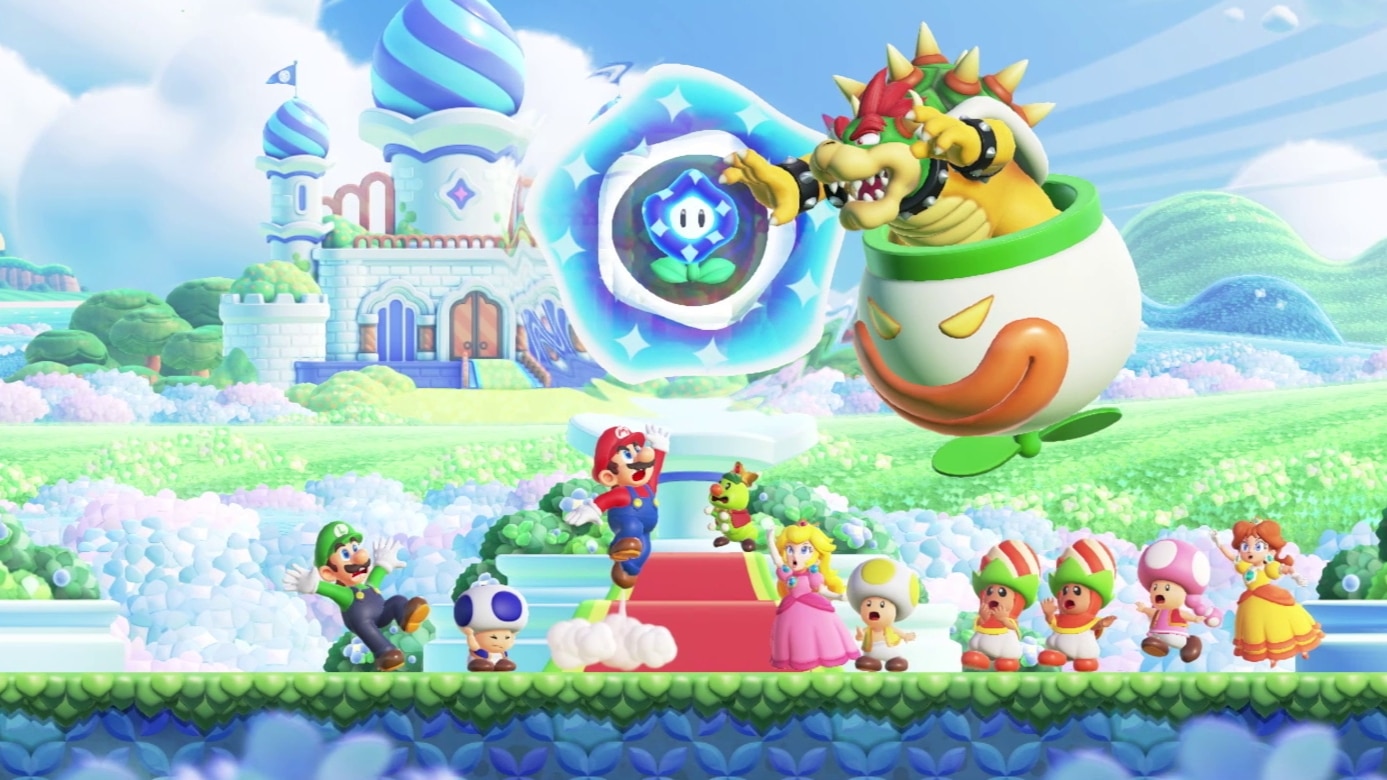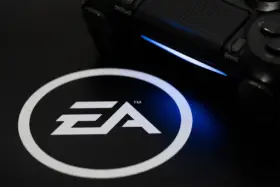Super Mario Bros. Wonder is set to give the traditional 2D platforming branch of the series a much-needed aesthetic makeover, on top of a modern rethink of some of its core gameplay ideas.
GamesHub content lead Leah J. Williams came away very impressed by her first impressions of the game, and now having spent a significant time with the game myself, I can definitely echo a lot of the same sentiments. The new aesthetic is absolutely delightful, and I’m quite impressed with the new Badge ability system, which transplants the idea of character-specific abilities into swappable tools anyone can use – like a floaty high jump, or a grappling hook, or even more challenging traits like characters running non-stop.
But one of the new features I got to experience first-hand, and the one I’m surprisingly delighted by, is the implementation of online multiplayer, which takes a few pages from the book of FromSoftware’s games, like Demon’s Souls, Dark Souls, and Elden Ring.
Super Mario Bros. Wonder lets you play cooperatively with up to four players total, and includes some new accommodations, like a suite of characters that don’t take damage – a godsend for less experienced players. But even when playing solo, the presence of other players will always be passively there if you’re playing online (with a Nintendo Switch Online subscription, of course).
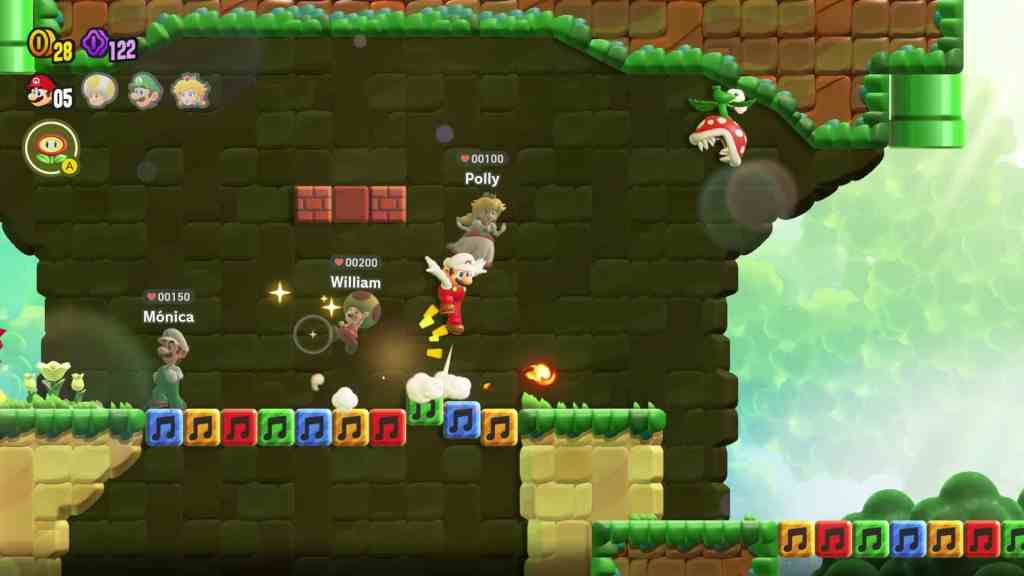
That’s because, like Dark Souls, when you’re making your way through the stages of Super Mario Bros. Wonder, you’ll run into the ghosts of players who have come before you, and be able to see their silhouettes traversing the same course, giving you hints as to where to go next, and an idea of what jumps might be difficult.
If you die during your run and you’re playing online, your character will turn into a ghost, rather than failing the stage immediately. When you’re a ghost, those previously dark silhouettes will take on proper form, and if you manage to touch one of them, you’ll be revived on the spot, and get another chance to continue the stage on your current life.
That’s not all. You and other players also have the option to drop cute little standees of your characters throughout the level for others to see in future runs. If you see another player’s standee and flip it, it’ll act as a defacto revival checkpoint – touch the standee as a ghost, and you’ll also be revived on the spot.
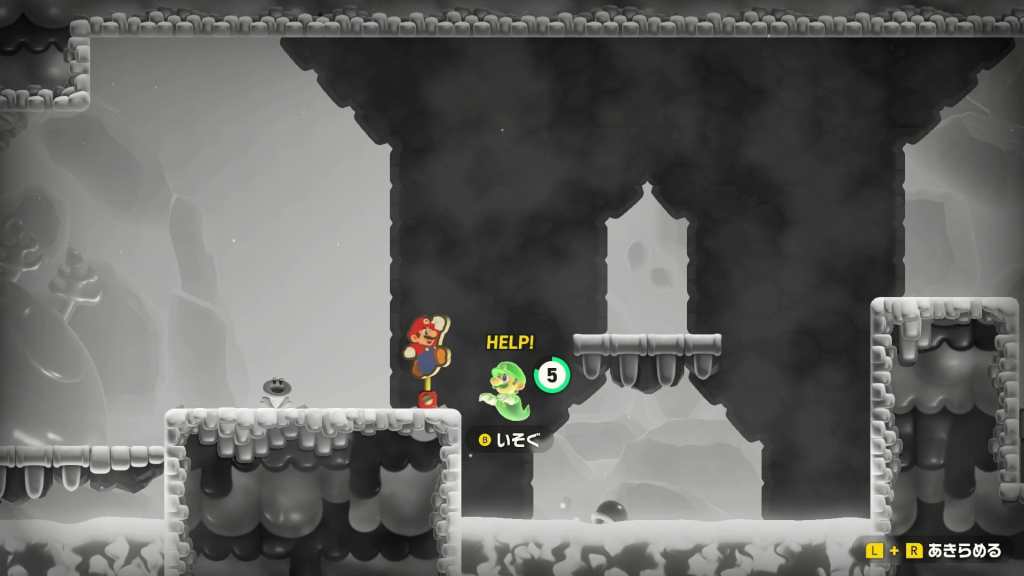
As a solo player, it’s a very useful feature to tap into when you’re taking on some of the game’s more challenging stages. Just being able to get another chance to take a jump correctly – so long as someone has been generous enough to place a standee by the edge – feels like an incredible boon, and takes a lot of the potential frustration out of the equation.
Standees also take on another alternative, but very useful function – communicating secrets to other players.
In lieu of a proper Dark Souls-like messaging system (no ‘But Holes‘ in this family-friendly game), one of the things that players tended to do was place their standees in hard-to-reach places, like in the secret passages above the stage, or in mid-air.
In doing so, they signalled the existence of a way to get up to those seemingly impossible places. A standee floating in mid-air was the mark of a hidden block directly underneath, invisible until you jumped up to hit and reveal it, potentially giving you valuable things like 1-UP mushrooms, a useful platform, or a passage to another hidden area. That could lead to a hidden exit, which could lead to hidden stages on the overworld map.
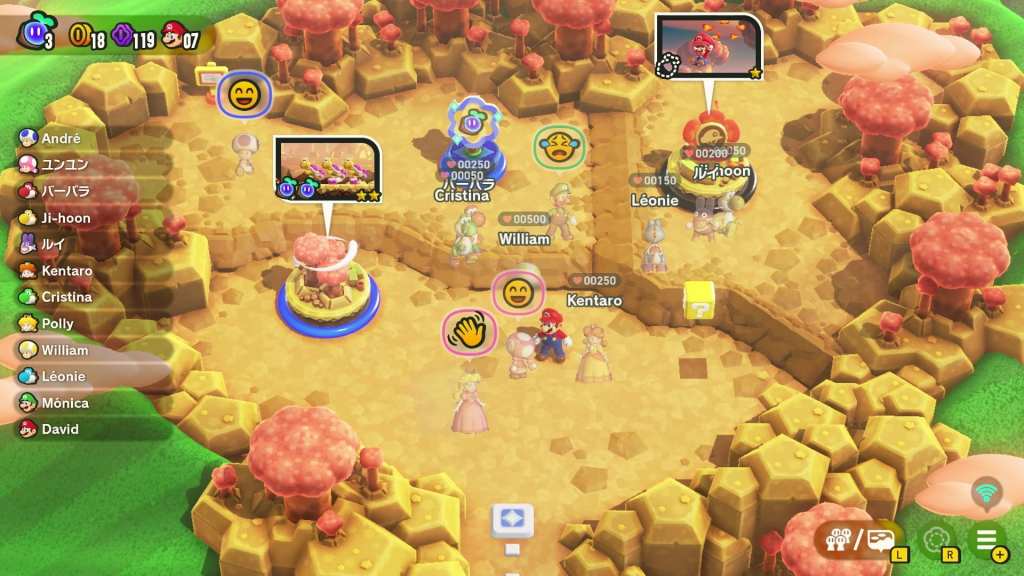
It’s especially useful as a solo player, because one of Super Mario Bros. Wonder’s other new design decisions is that each of the 12 playable characters in the game has certain hidden blocks that are exclusively visible to them once they get close. Using standees are one way of helping other players chip away at the mysteries of the game’s many stages, if you prefer to play the game alone.
The ghosts of players past aren’t the only thing you run into when connected online – it’s still possible to run into real, live players when playing a course as well, even if you aren’t specifically in an online lobby with friends.
You won’t share the same world state or coins, but the revival rules apply, you can emote at each other, and you can share items with them. Any power-up (including the fire flower, the ability to shoot bubbles, the drill helmet, and of course, the elephant) you have in reserve can be brought out by holding the A-button. The item will arrive encased in a balloon, and while you can grab it yourself, you can also leave it for another player to pick up.
There doesn’t seem to be any tangible benefit to sharing items and placing standees that other players use, but you do earn Heart Points every time, which are an always-visible indicator to other people to show how much of a good egg you are. Finishing a stage along with other players or player ghosts will also earn you heart points.
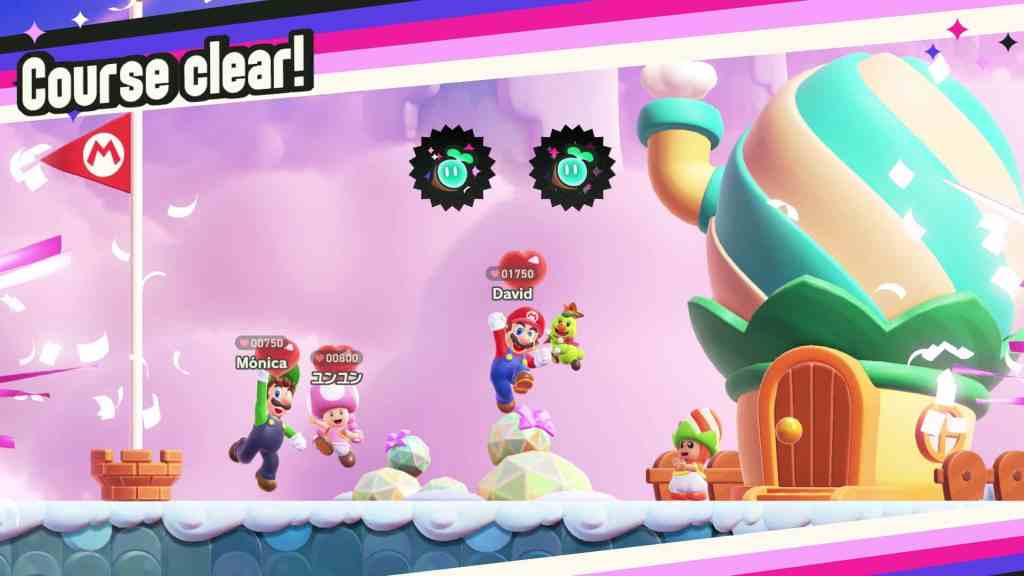
“Cool online implementation” is not the first thing I would have thought of going into a new Super Mario Bros. game, but with this feature, it feels like
There are plenty more surprises and new things to love about Super Mario Bros. Wonder beyond the online mode, of course – the diversity of the stage mechanics, a much-appreciated mix of both entertainingly easy-breezy stages, and nail-bitingly difficult stages (with options to make them more approachable), and just the sheer feeling of joy in the character animation, the world and level ideas. We’ll have a lot more to say about it in our full review of the game, which will arrive shortly before the game’s release.
Super Mario Bros. Wonder will be released for
Must-Read Casino & Betting Guides
Check out our featured gambling guides to find top casinos, no verification sites, fast withdrawal platforms, and more.
